EuropeanSpaceAgency
Latest

Europe's space agency will beam your message to Polaris
The European Space Agency (ESA) is collecting messages from people around the world to send to a place we'll never set foot on: Polaris. All you've got to do to send your thoughts to the North Star is head over to the "A Simple Response to an Elemental Message" project website and type in your response to the question "How will our present environmental interactions shape the future?"
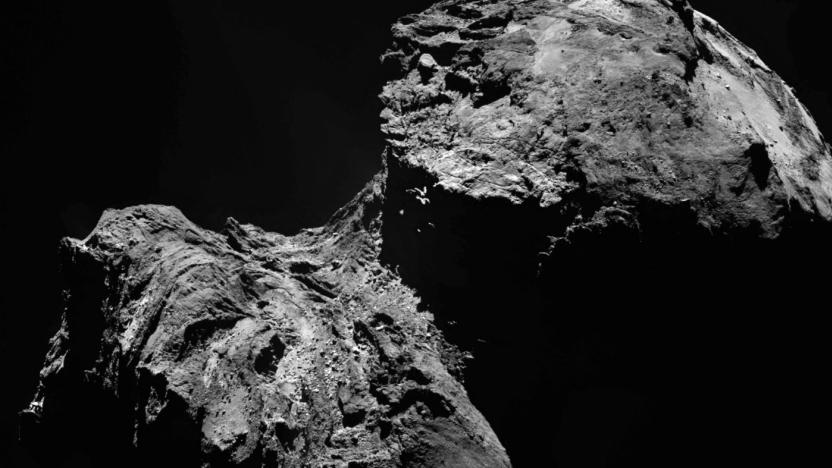
Rosetta will crash into its comet and die on September 30th
Farewell, young spacecraft. The European Space Agency's Rosetta probe has been surveying Comet 67P (or Churyumov-Gerasimenko) for the past 12 years, and on September 30th it will crash into the space rock and end its mission. Rosetta is nearing the orbit of Jupiter, which means it's running short on solar power and bandwidth required to downlink necessary data.
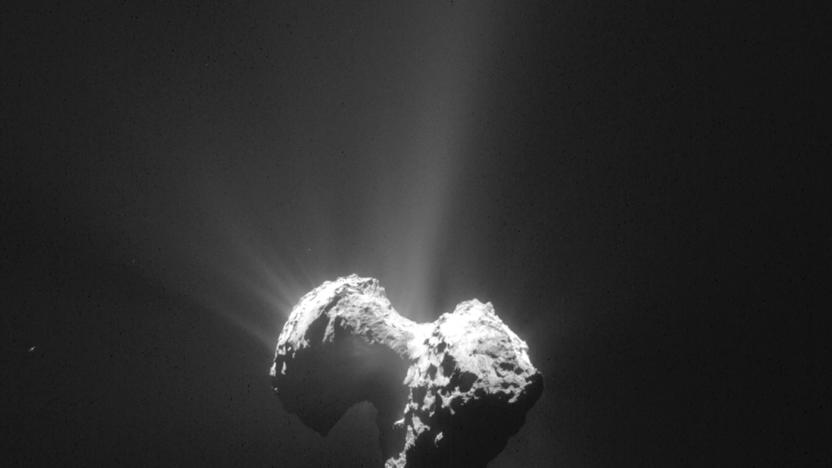
Rosetta finds key building blocks of life in comet dust
The amino acid glycine, one of the key building blocks of life as we know it, has been found in the "fuzzy atmosphere" of comet 67P Churyumov-Gerasimenko, the European Space Agency announced today. The findings mean it is likely the glycine was carried through space on the surface of the comet.

Personal electric plane won't need an airport
Now that hoverboards are an honest-to-god thing, we have to say we're pretty disappointed with how flying cars have worked out. Another company has jumped into the fray with a vertical take-off plane called the Lilium that can soar at 400 km/h (250 mph). We'd normally say they're dreaming with the specs: A 10,000 foot ceiling, 500 km (310 mile) range and helicopter-like takeoffs, all on battery power. However, it's hosted by a European Space Agency (ESA) incubator and the team from the Technical University of Munich plans manned tests next year.

Europe and Russia move their ExoMars mission launch to 2020
While the first part of Europe's and Russia's ExoMars mission took off on time in March, the second phase has been delayed. They've decided to launch their Martian rover, which will be capable of drilling up to two meters (6.5 feet) below the surface, in 2020 instead of 2018 like they previously planned. According to the BBC, Roscosmos' engineers have been having a hard time designing rover's landing mechanism. At the same time, European Space Agency's engineers are also having trouble putting together all the components and instruments ExoMars' second phase needs.
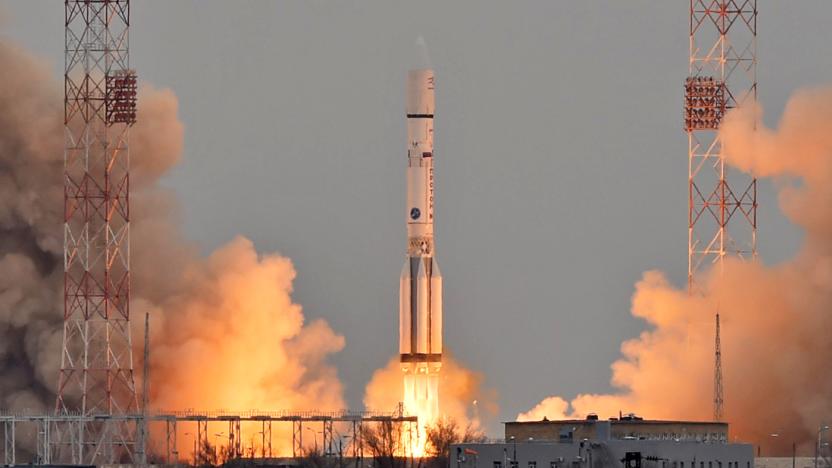
ExoMars is speeding toward the red planet
In 2013 the European and Russian folks behind ExoMars announced they'd launch a rocket to explore Mars this year and they're right on schedule. Lifting off from Kazakhstan this morning, the spacecraft now has a seven month journey to the Red Planet where the Schiaparelli module will test its entry, descent and landing tech that'll be used on future missions. Once on the surface it'll start doing environmental analysis and hopefully avoid a turf selfie war with our Curiosity rover. Its "short" surface mission involves measuring electrical fields that should give insight into what triggers Martian dust storms.
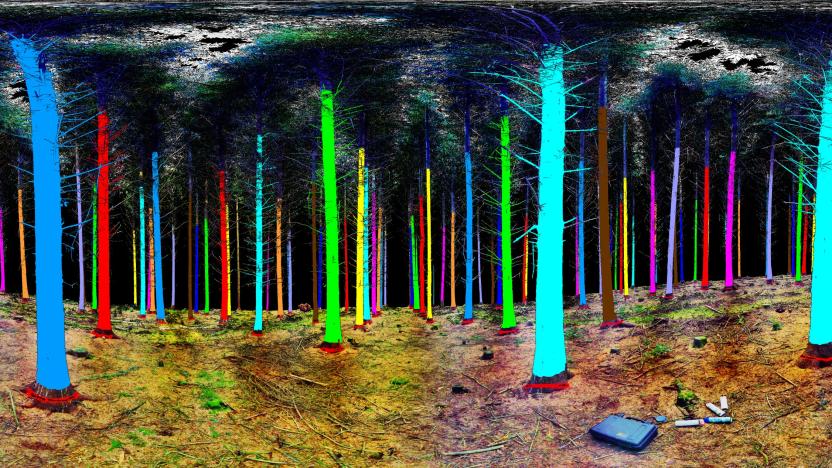
The environmentally friendly rainbow laser forest
Lasers might not be the first things that come to mind when thinking of the conserving the environment. Nonetheless, they're being used to manage commercial forests more efficiently. The false-color image above was captured with a "laser radar" LIDAR (light detection and ranging) system from Irish company Treemetrics. The colors are a 2D representation of 3D data that reveals how dense and straight the trees are. This allows plantation managers to understand how many logs can be harvested from any given tree, and what their quality will be.

Here's how you make coffee in the International Space Station
Now that the International Space Station is in bloom, how about a nice cup o' joe to enjoy alongside the (single piece of) greenery? European Space Agency astronaut Tim Peake pulls out a coffee with cream vacuum pack (with the delicious sounding sugar substitute), and inserts it into the most high-tech kettle we've ever seen. This injects hot water into the pack, and one plastic straw later you're drinking space coffee. Which is obviously the best kind of coffee. It seems astronauts are still waiting on that space-ready espresso machine from Lavazza.

Spacewalk cancelled after water found in helmets again
Mission control had to cut short an ISS spacewalk on Friday after US astronaut Tim Kopra noticed water building up in his helmet hours into the excursion. Both Kopra and British astronaut Tim Peake are back and safe inside the International Space Station.

The ESA wants to put people on the moon by the 2020s
The European Space Agency is going back to the moon. It announced on Friday that it's working with international partners to land a series of manned missions on the moon by the end of the next decade. But first, they're sending in robots to pave the way.

Watch the first British astronaut in over 20 years blast off for the ISS
One in, one out. Or to be more specific, three in and three out. A trio of astronauts descended from the International Space Station (ISS) on Friday, making way for a new group of space-smitten explorers. Among the group blasting off today is Tim Peake, the first British astronaut to visit the ISS and the first UK astronaut to explore space in over 20 years. He'll be joined by NASA astronaut Tim Kopra and experienced cosmonaut Yuri Malenchenko, who in 2003 became the first person to marry in space.
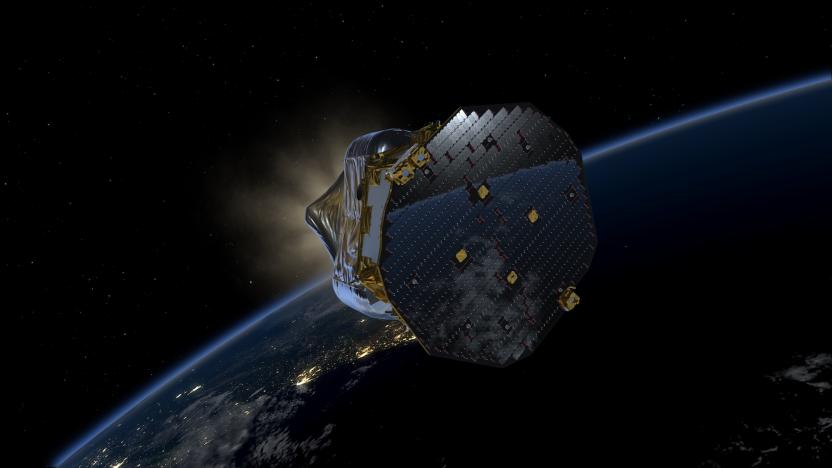
Watch ESA explain how it plans to find gravitational waves
In just under a week the European Space Agency (ESA) will launch its LISA Pathfinder spacecraft on a Vega rocket. Buried within the vessel are two cubes made of gold-platinum which, scientists hope, can lay the groundwork for measuring gravitational waves in space. The theories and testing procedures can be tricky to wrap your head around, but thankfully the ESA has made some explainer videos (below) to help you out.

The dark side of Rosetta's comet is icier than expected
The comet that the European Space Agency's Rosetta spacecraft has been chasing around the sun has a dark side. No, 67P isn't hiding any terrible secrets -- the southern hemisphere literally faces away from the sun during most of its 6.5-year-long solar orbit. Until recently, none of the cameras aboard Rosetta have been able to image it due to that utter lack of light, except for one -- the MIRO microwave instrument. NASA scientists behind the device have released a report on their observations, and lead author Mathieu Choukroun said "these unique data are telling us something very intriguing about the material just below its surface."

ISS astronaut will get to drive and 'feel' a rover on Earth
It's going to be a little while before humanity sets foot on Mars, but in the meantime NASA has a bundle of robots exploring the planet for us. The data they're collecting is valuable, but now researchers want to give their operators greater control. Specifically, they're interested in force feedback -- timely vibrations that would help astronauts carry out difficult tasks remotely. The European Space Agency (ESA) has developed a new rover with this in mind -- the "Interact Centaur," which has an onboard camera and two force-sensitive arms. ESA astronaut Andreas Mogensen is headed to the International Space Station (ISS) on September 2nd and, five days later, he'll be controlling one that's back on Earth.

ISS astronauts mimic nature to turn urine into drinking water
Recycling water is key for astronauts on the International Space Station since sending water to the crew is heavy and expensive. The current systems work well and the tech is being used here on Earth in places where clean drinking water is in short supply. In an effort to increase efficiency, astronauts will test a new filtration system from Aquaporin Space Alliance. The so-called AquaMembrane employs nanotechnology and proteins to transform waste water (sweat and urine) into clean drinking water, proteins that regulate water in living things like human kidneys and bamboo shoots. Those aquaporin proteins are situated on a membrane and as water passes through tiny protein tubes, an electrostatic charge stops things like salt from getting through. The water flows continuously from side to side without using extra energy thanks to forward osmosis.

Europe's Philae comet lander finally wakes up
After seven months of not-so-voluntary deep sleep, the comet lander Philae has finally woken up in earnest. The European Space Agency got in contact with its explorer for 85 precious seconds late on June 13th, receiving 300-plus data packets that shed light on what happened following the machine's bumpy touchdown. As it turns out, Philae came back to life at least temporarily during its forced hibernation -- it just couldn't get back in touch with its Rosetta host ship and thus the ground crew.

The Big Picture: a laser-beamed satellite image of Berlin
At first glance, the satellite image above may seem like one of the many that have been shared in the past. What you're looking at, though, was delivered in a much more timely manner than the imagery which came before it. For the first time ever, the European Space Agency has used a laser to beam a photograph to Earth -- of Berlin, in this case -- stretching around 36,000 km (or roughly 22,000 miles) across space and delivering it almost in real time. The ESA was able to accomplish this by linking up its Sentinel-1 and Alphasat satellites, both of which are equipped with a laser communications system that makes it possible to deliver data at super high speeds.

The Big Picture: cooling molten metal in space
Ever wonder what hot metal would be like if it weren't bound by containers, liquids... or even gravity? You're looking at it. The European Space Agency has developed an electromagnetic levitator that the International Space Station is using to see how molten metal cools when it's free of the constraints you typically find on Earth. This experiment isn't intended solely as eye candy, of course. The station crew will use a high-speed camera to record the cooling process and make note of how it affects material structures. If the tests prove fruitful, they could teach people on the ground how to forge metal alloys with greater strength, exotic patterns and other traits that are very hard to produce using modern day techniques.

Rosetta's Philae lander touches down on comet after 10-year quest (update: new image)
After Rosetta's 10-year journey -- capped off with the smooth 7-hour descent of its Philae lander -- an explosion of elation went up in the European Space Agency's mission control center in Darmstadt, Germany. At around 11:04AM Eastern Time, humanity has, for the first time in history, carefully coaxed an extension of itself onto the surface of a comet. The first few moments after landing turned tense as the ESA team worked to determine if everything worked, but Philae Lander Manager Stephan Ullamec broke the strained silence. "The harpoons have been fired and the landing gear has been moved inside. We're on the surface. Philae is talking to us, more data to come," he said. Spacecraft operations manager Andrea Accomazzo (whom the internet started calling "ESA Hoodie Guy") couldn't quite help himself. "We can't be happier than we are now," he yelped. Update: ESA just released the first image from Rosetta on the surface of the comet (above) with one of its three feet visible in the foreground. The full panorama will be available at 2PM ET.
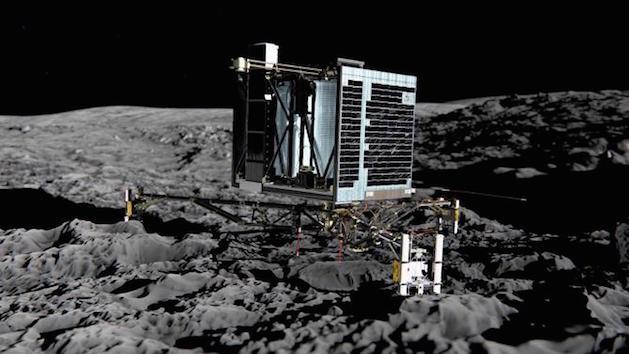
Watch the European Space Agency's comet landing live
After being launched nearly 10 years ago, the ESA's Rosetta mission is about to reach a major milestone -- and you'll be able to watch as it all unfolds. Over the next few hours, NASA will be live-streaming the mission's attempt at putting its Philae lander on comet 67P/Churyumov-Gerasimenko (say that 10 times fast). The space agency revealed this event would be happening a couple months ago, as it looks to send the 67-pound lander to drill into the comet's surface, learn more about its composition and, subsequently, send that information back to earth. It's also going to be the first time ever any images are captured from the surface of a comet, so you probably shouldn't miss that. The ESA expects the landing to take place at around 11:02AM ET tomorrow (November 12th), which means you still have plenty of time to invite friends over for a viewing party, if you're into that sort of thing.











